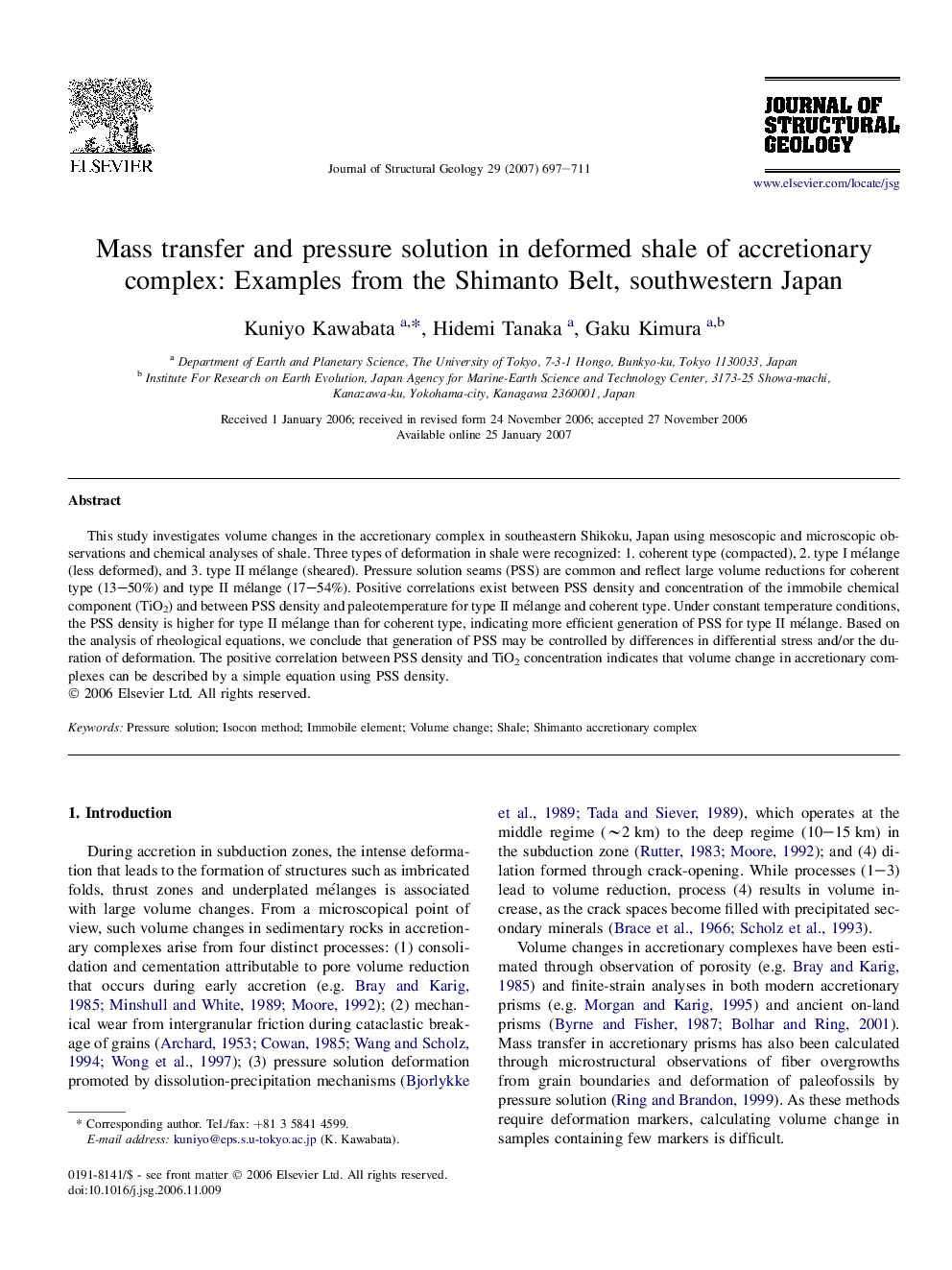| Article ID | Journal | Published Year | Pages | File Type |
|---|---|---|---|---|
| 4734410 | Journal of Structural Geology | 2007 | 15 Pages |
This study investigates volume changes in the accretionary complex in southeastern Shikoku, Japan using mesoscopic and microscopic observations and chemical analyses of shale. Three types of deformation in shale were recognized: 1. coherent type (compacted), 2. type I mélange (less deformed), and 3. type II mélange (sheared). Pressure solution seams (PSS) are common and reflect large volume reductions for coherent type (13–50%) and type II mélange (17–54%). Positive correlations exist between PSS density and concentration of the immobile chemical component (TiO2) and between PSS density and paleotemperature for type II mélange and coherent type. Under constant temperature conditions, the PSS density is higher for type II mélange than for coherent type, indicating more efficient generation of PSS for type II mélange. Based on the analysis of rheological equations, we conclude that generation of PSS may be controlled by differences in differential stress and/or the duration of deformation. The positive correlation between PSS density and TiO2 concentration indicates that volume change in accretionary complexes can be described by a simple equation using PSS density.
